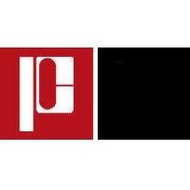
(View Complete Item Description)
This is the sharing space for MAT101 Honors. I highly suggest the Lippmann textbook Math in Society 2nd edition.Lippmann textbook Math in SocientyLippmann YouTube Channel: VideosWriting Intensive Resources:Please look at the following book resources:A Short Account of the History of MathematicsAn Episodic History of MathematicsA History of Mathematics - an older book so please look if this is appropriate for inclusionFrom the American Mathematical Society - I would highly suggest picking specific chapters you consider acceptable topics.AMS History of Mathematics, Volume 1: A Century of Mathematics in America, Part I, Edited by Peter Duren, with the assistance of Richard A. Askey and Uta C. MerzbachThe first 100 years of the AMS: profiles of mathematicians, the mathematical community during the world wars, the growth of mathematical fields...AMS History of Mathematics, Volume 2: A Century of Mathematics in America, Part II, edited by Peter Duren, with the assistance of Richard A. Askey and Uta C. MerzbachThe histories of mathematical activity at the major U.S. institutions; the influence of women in mathematics; the flowering of applied mathematics...AMS History of Mathematics, Volume 3: A Century of Mathematics in America, Part III , edited by Peter Duren, with the assistance of Richard A. Askey and Uta C. MerzbachThe mathematics and mathematical personalities in some of the nation's prominent departments.PBS Infinite Series - Posted on YouTube a digitally produced, engaging resource to explain mathematical concepts.Ted Talks on Mathematics - Not easily matched with topics but can be of some use to pique interest.Teaching with Data - This site has numerous data sets and some suggested assignmentsMeasure of America - This site is good for students to see how numbers are used to visualize data and determine impact.U.S. Census Site - Teaching Activities 9-12 - A small collection of activities using the U.S. Census site. All materials included. OER Cryptography textbook The Joy of Cryptography: http://web.engr.oregonstate.edu/~rosulekm/crypto/Saylor Cryptography: https://www.oercommons.org/courses/cryptography/view
Material Type:
Module
Author:
Annemarie Roscello




















